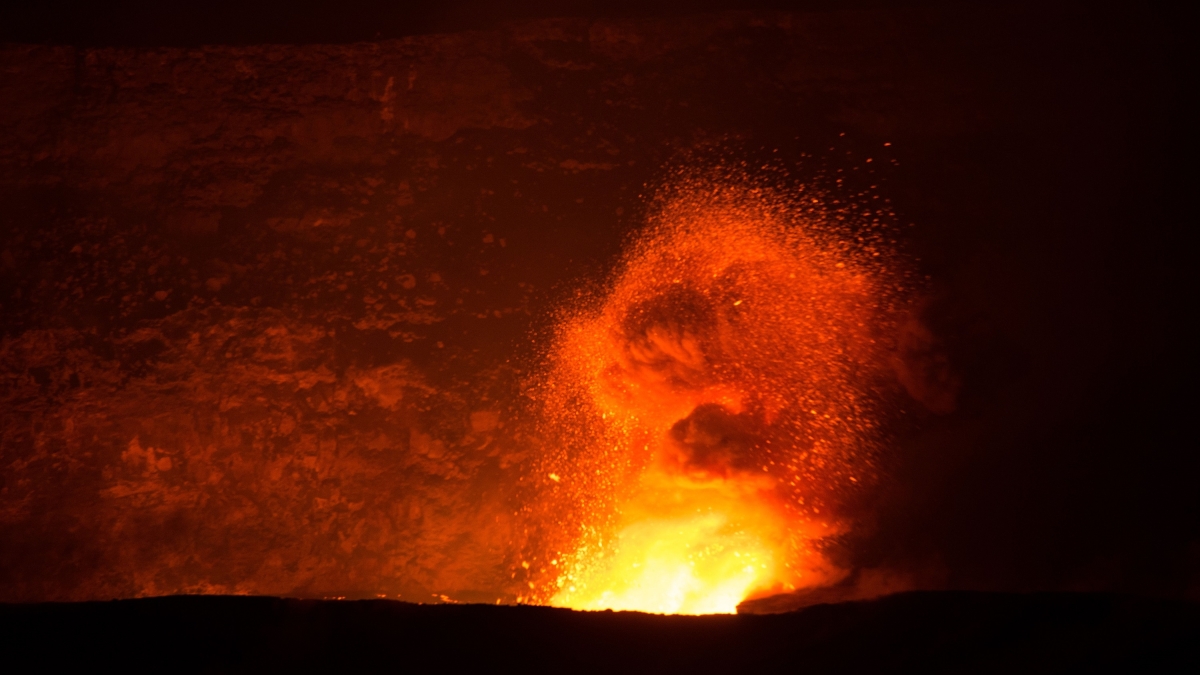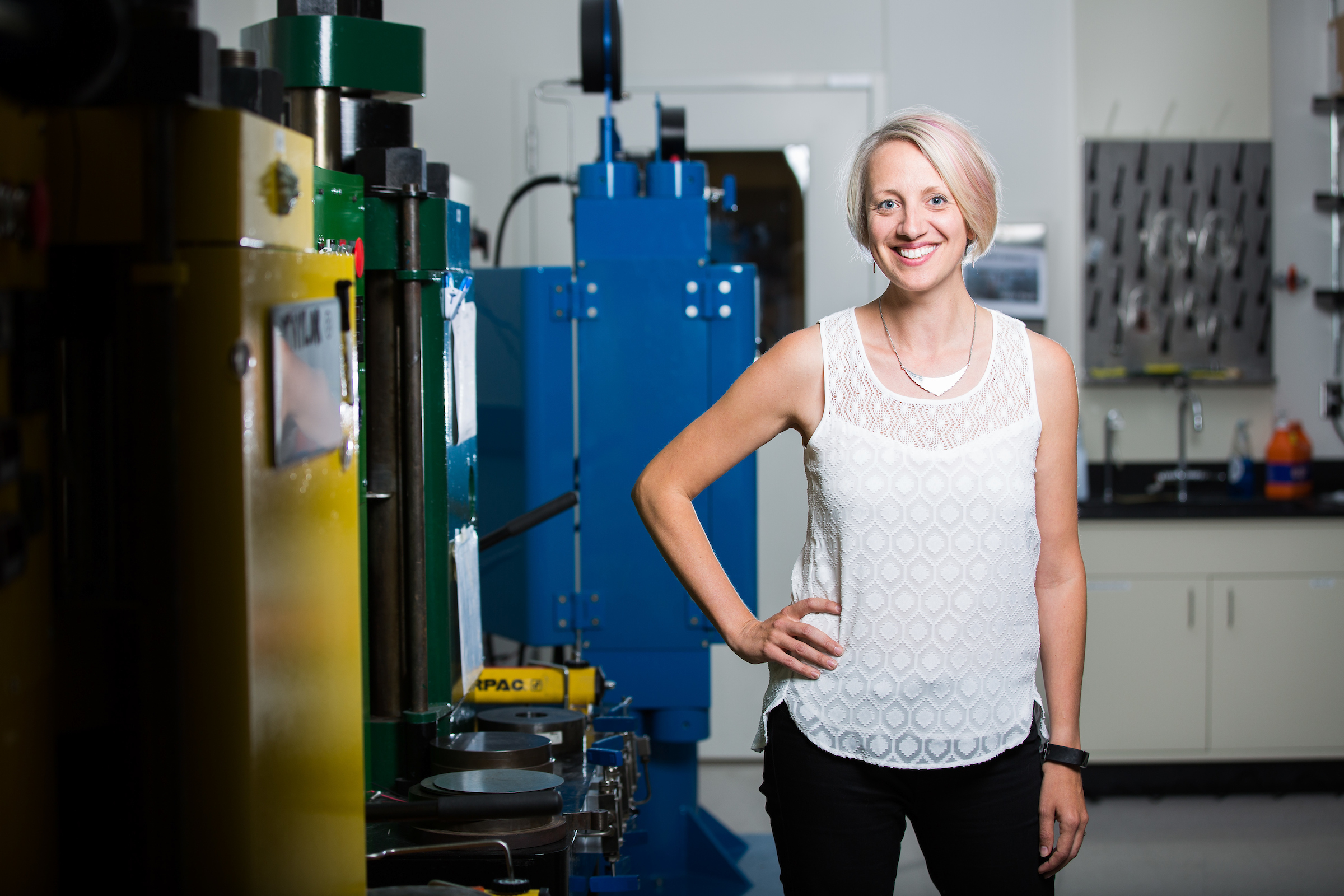From Italy to Iceland to Indonesia, volcanoes have been worshipped and venerated for centuries, seen as the abode of angry and capricious gods mollified only by fish, pigs, and holy relics.
It’s human nature to ascribe divinity to mysterious natural processes, and to want to make them go away with a chicken or a lock of hair. No one, even scientists, really knows what the signs of an imminent eruption look like.
On Savo, an island in the Solomon Island archipelago, the local volcano has erupted at least three times in recorded history. The 3,000 inhabitants keep oral traditions of history. They know that when a major eruption is imminent, the crater fills with water, earthquakes and tsunamis occur, and vegetation dies off.
An Arizona State University assistant professor is embarking on a five-year study to take some of the mystery out of volcano eruptions by identifying coming eruptions.
Christy Till, an igneous petrologist in the School of Earth and Space Exploration, has been awarded a grant from the National Science Foundation for about $575,000.
Earthquake prediction is extremely fuzzy.
“We’re even a little further behind in volcano studies,” Till said. “We don’t even have early warning systems yet.”
What causes bodies of magma to form? What causes them to erupt? Scientists have notions of what those processes are, but they don’t know where they fit in the time frame of an eruption. Till will search for markers in her study.
“We’re still trying to understand the science,” she said. “What are the events that head up to the eruption, so we can look for them on the surface. ... We have all those clues about how to look at volcanoes, but we don’t know how to decode them very well yet.”
Till will study past eruptions as clues.
“Those have already erupted, and they’ve had the same series of processes happen to them, those marker events that caused them to erupt,” she said. “We want to go and use them to decode that information so we can say, “OK, at this type of volcano this is what happened and this is how long it took. And at that type of volcano this is what happened and how long it took. And we can see how those compare and how similar and different they are if we look at a bunch of volcanoes.”
ASU Assistant Professor Christy Till (shown in her lab in Tempe on June 8) is embarking on a five-year study to take some of the mystery out of volcano eruptions, supported by a grant from the National Science Foundation's Early Career Development (CAREER) Program. Photo by Deanna Dent/ASU Now
When magma erupts, it’s a combination of hot liquid, solid rock incorporated into the liquid, gases and crystals that formed when the magma was in the subsurface and cooled down.
The crystals have concentric zones in them, like tree rings. And, also like tree rings, they hold a huge amount of information.
“These crystals are time capsules of information and they tell us about the composition of the magma they were growing from, the temperature of the magma,” Till said. “If there was a sudden event in the magma chamber, they recorded that and we can use that to construct the life history of the magma leading up to its eruption when the crystal was erupted onto the surface.”
Volcanoes are somewhat like people. Their stories vary throughout their lives, and they are very different from each other.
“They’re not all the same,” Till said. “Trying to understand why those variations exist and what they mean about the likelihood of an eruption is something we spend a lot of time thinking about.”
The grant will also be used for an education component in science communication.
The NSF Faculty Early Career Development (CAREER) Program offers awards in support of early-career faculty who have the potential to serve as academic role models in research and education and to lead advances in the mission of their department or organization.
Fourteen ASU faculty won the award this year. Typically the NSF funds about 350 CAREER faculty each year.
The awards are not aimed at one specific question.
“They’re more of a vision of a direction for you to take your research for the next five years,” Till said. “You’re defining a body of work you’re going to do, not just one project.”
Top photo by Pixabay
More Science and technology
Largest genetic chimpanzee study unveils how they’ve adapted to multiple habitats and disease
Chimpanzees are humans' closest living relatives, sharing about 98% of our DNA. Because of this, scientists can learn more about human evolution by studying how chimpanzees adapt to different…

Beyond the 'Dragon Arc': Unveiling a treasure trove of hidden stars
NASA's James Webb Space Telescope (JWST) has set a new milestone: capturing images of over 40 individual stars in a galaxy so distant that its light has traveled since the universe was only half its…

ASU selected as home and partner for CHIPS and Science Act-funded national facility for semiconductor advanced packaging
Following a week where a spirited effort by the Sun Devil football team captured the nation’s attention in the Peach Bowl, it is Arizona State University’s capability as a top-tier research…

